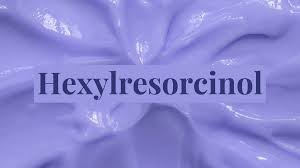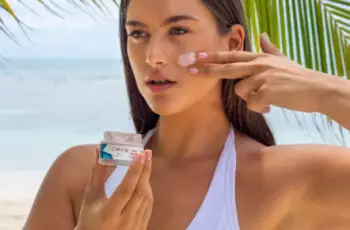
Hexylresorcinol in Skincare: The Ultimate Guide
Hexylresorcinol has gained popularity as one of the most effective skin lightening ingredients used in skincare today.
It’s particularly known for its ability to lighten dark spots and even out skin tone, making it a staple in many pigmentation-targeting skincare products.
Unlike other skin lighteners, hexylresorcinol is a better choice for sensitive skin when compared to similar compounds like resorcinol.
It also has notable antibacterial properties, adding another layer of benefit to its use in skincare.
In this article, we’ll delve into what hexylresorcinol is, its benefits, potential side effects, and how to safely incorporate it into your skincare routine.
What Is Hexylresorcinol?
Hexylresorcinol is a chemical compound derived from resorcinol, but with a more skin-friendly structure.
It is primarily used in skincare products due to its ability to lighten hyperpigmentation and treat dark spots.
This compound inhibits the production of melanin by blocking the enzyme tyrosinase, which is responsible for skin pigmentation.
In addition to its lightening effects, hexylresorcinol also offers anti-aging, anti-inflammatory, and antioxidant properties.
Is Hexylresorcinol Safe for Skin?
Yes, hexylresorcinol is generally considered safe for use in skincare.
It is a “clean” ingredient, meaning it’s free from harmful chemicals, and it has a low safety rating of 1 from the Environmental Working Group (EWG), indicating minimal risks.
Interestingly, hexylresorcinol is so safe that it’s also used in the food industry to lighten certain fruits and grains, without adverse effects.
However, as with any skincare ingredient, sensitivity can occur, especially for individuals with allergies.
Side Effects of Hexylresorcinol
While hexylresorcinol is generally safe for most skin types, there are a few potential side effects to be aware of:
Allergic Reactions: If you’re allergic to hexylresorcinol, you may experience redness, rash, or irritation at the application site.
To test for potential allergies, apply a small amount of the product to a patch of skin and observe for 12-24 hours. If irritation occurs, discontinue use.
Halo Effect: If applied incorrectly, hexylresorcinol may cause a “halo” effect around dark spots, where the treated area becomes lighter than the surrounding skin. To avoid this, apply only to the target areas.
Post-Inflammatory Pigmentary Alteration (PIPA): Overuse or excessive application can lead to irritation, which may cause the treated area to darken after the irritation subsides.
The key to avoiding these side effects is to use hexylresorcinol in moderation and as part of a well-balanced skincare routine tailored to your skin type.
Is Hexylresorcinol Safe During Pregnancy?
Pregnant women should avoid using products with hexylresorcinol.
Since hexylresorcinol is a derivative of resorcinol, a compound known to be absorbed into the bloodstream, it is not considered safe for use during pregnancy.
There are other options available for treating pigmentation issues like melasma during pregnancy that do not contain resorcinol-based ingredients.
If you’re pregnant, always consult with your dermatologist to find suitable alternatives.
Benefits of Hexylresorcinol in Skincare
Hexylresorcinol is known for its numerous benefits, making it a powerful addition to a skincare routine aimed at improving skin tone and texture. Some of the most notable benefits include:
Treats Hyperpigmentation: Hexylresorcinol inhibits melanin production, helping to lighten dark spots and even out skin tone.
Anti-Aging: Its antioxidant properties help combat free radicals, reducing the signs of aging like fine lines and wrinkles.
Fights Acne: By reducing the bacteria responsible for acne, hexylresorcinol can help clear up acne-prone skin.
Skin Lightening: Its primary function is to brighten the skin and treat discoloration, leaving the skin with a more even complexion.
Anti-Inflammatory: Hexylresorcinol has anti-inflammatory effects, which can help reduce redness and irritation, particularly in sensitive or acne-prone skin.
Anti-Glycation: Hexylresorcinol also combats glycation, a process where excess sugar binds to proteins and accelerates skin aging.
How Long Does It Take to See Results?
If used correctly and as part of a proper skincare routine, you can typically expect to see results from hexylresorcinol within 8 to 16 weeks.
It’s important to be consistent with your skincare routine and use the product according to the recommendations based on your Baumann Skin Type.
If after 3 months you haven’t seen significant improvement, consider revising your routine or consulting a dermatologist for further advice.
How to Use Hexylresorcinol in Your Skincare Routine
Hexylresorcinol works best when applied directly to the affected areas, such as dark spots, acne scars, or areas with sun damage.
You can use it once or twice a day, depending on your skin type and the specific product you’re using.
To maximize its effectiveness, incorporate hexylresorcinol into a well-rounded skincare routine that includes other beneficial ingredients for your skin type.
Typically, hexylresorcinol is used in the morning and evening as a part of your skincare regimen.
If you’re pairing hexylresorcinol with other active ingredients, like retinol, be sure to space them out in your routine to avoid overloading the skin.
Hexylresorcinol vs Hydroquinone
Both hexylresorcinol and hydroquinone are used to treat hyperpigmentation, but they are quite different in their properties and usage.
Hexylresorcinol is considered a safer option, as it does not carry the same safety concerns associated with hydroquinone.
Hydroquinone has been linked to side effects like skin thinning and ochronosis (a blue-black discoloration of the skin) with prolonged use.
Hexylresorcinol also permeates the skin’s cellular membranes more efficiently than hydroquinone, kojic acid, or licorice extract.
While hydroquinone requires a prescription in the U.S., hexylresorcinol products are available over-the-counter, making them easier to access.
Hexylresorcinol vs Resorcinol
Although hexylresorcinol and resorcinol are similar, they have key differences:
Hexylresorcinol is less irritating to sensitive skin compared to resorcinol, making it a better option for those with delicate skin.
Hexylresorcinol is more efficient at passing through the skin’s cell membranes than resorcinol, which enhances its effectiveness in treating hyperpigmentation.
Resorcinol is also linked to allergic reactions, with an EWG rating of 7, indicating a higher risk of skin sensitivity.
Hexylresorcinol vs Niacinamide
Niacinamide and hexylresorcinol are both used for skin lightening, but they work in different ways:
Hexylresorcinol is a tyrosinase inhibitor, meaning it prevents the formation of melanin, the pigment responsible for dark spots.
Niacinamide, on the other hand, is a PAR-2 blocker, which blocks the transfer of melanin-filled melanocytes into keratinocytes, helping to lighten skin.
Both ingredients offer anti-aging benefits, but they achieve their effects through different pathways.
Interestingly, you can use both ingredients together for enhanced results, as they complement each other in the pigmentation process.
Top Products Containing Hexylresorcinol
Several skincare brands offer products featuring hexylresorcinol. Here are six of the best dermatologist-recommended options:
Medature Hydro Bright Treatment – One of the most affordable options for skin lightening.
Murad Multivitamin Infusion Oil – Best for very dry skin, providing deep hydration alongside pigmentation treatment.
Derma Made Mela Fade – Combines hexylresorcinol with tranexamic acid and kojic acid for a multi-action approach to skin lightening.
Replenix Pigment Correcting Brightening Cream – A moisturizing cream with hexylresorcinol and arbutin, ideal for sensitive skin.
PCA Pigment Gel Pro – A potent formula, though it may be too irritating for sensitive skin types.
MDSolarSciences MD Revitalize Retinol Serum – A combination of retinol and hexylresorcinol in one serum for treating pigmentation and signs of aging.
Can Hexylresorcinol Be Used with Retinol?
Yes, you can use hexylresorcinol and retinol together in your skincare routine to treat hyperpigmentation.
Typically, hexylresorcinol is applied earlier in the routine (step 3) in both the AM and PM, while retinol is used in the evening routine (step 5).
The two ingredients complement each other well: retinol enhances skin cell turnover, speeding up the effects of hexylresorcinol in treating dark spots.
For those who want to combine both ingredients in a single step, MDSolarSciences MD Revitalize Retinol Serum is a good option.
Conclusion
Hexylresorcinol is a highly effective ingredient for treating dark spots, melasma, and other forms of hyperpigmentation.
It is safer and more suitable for sensitive skin than other lightening agents like hydroquinone or resorcinol,
and its additional benefits—such as anti-aging and anti-inflammatory properties—make it a versatile option for improving overall skin tone and texture.
As with any active ingredient, proper usage and routine customization for your specific skin type are key to achieving the best results.


